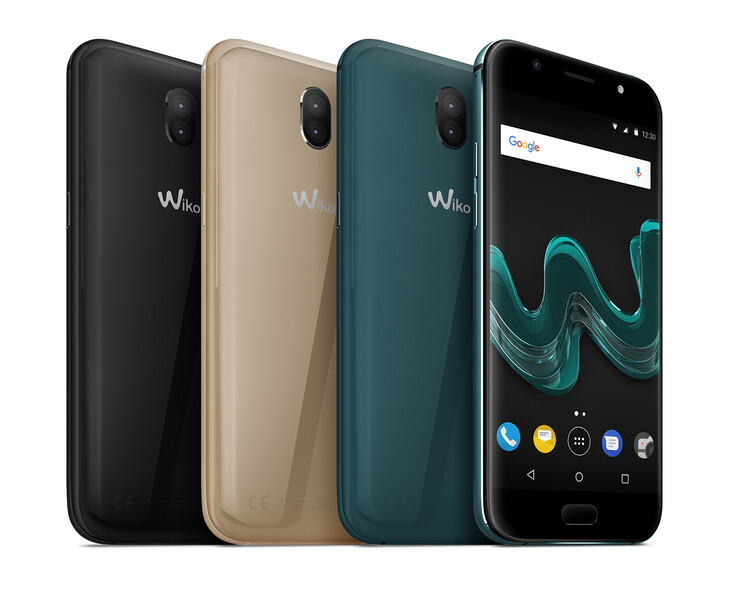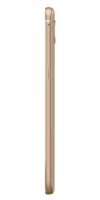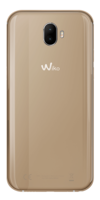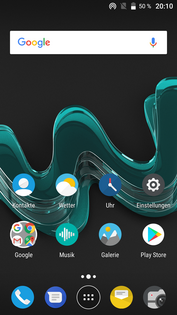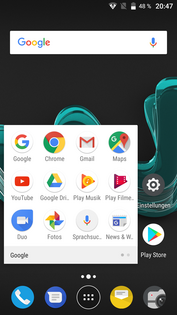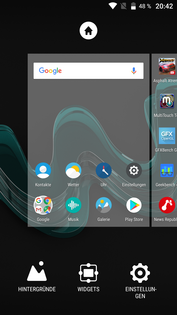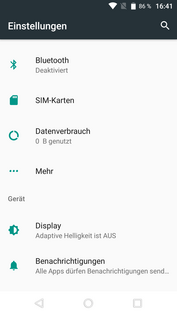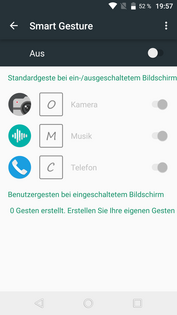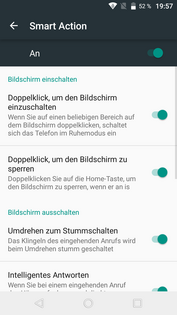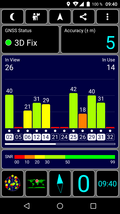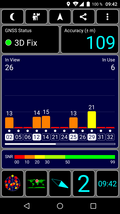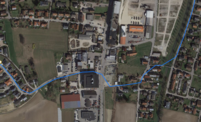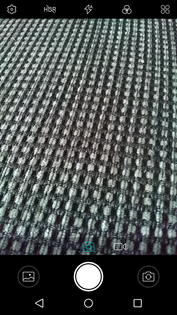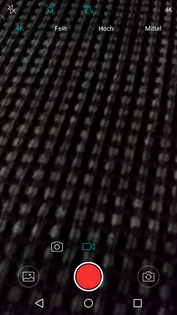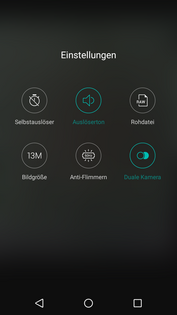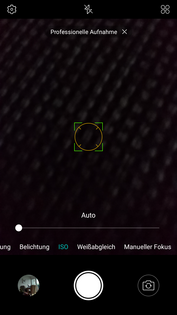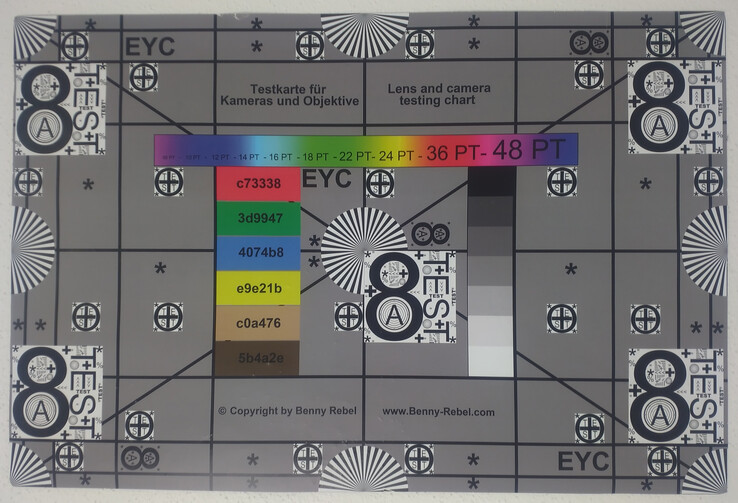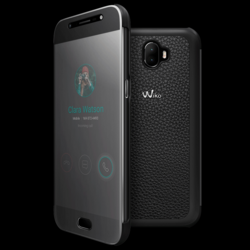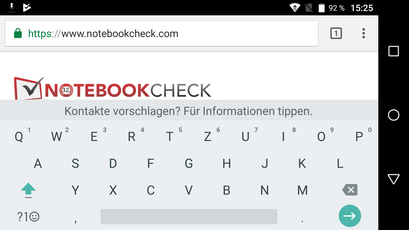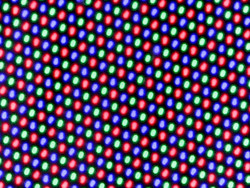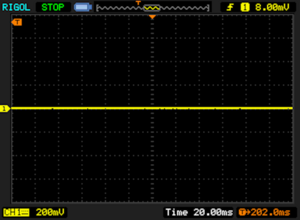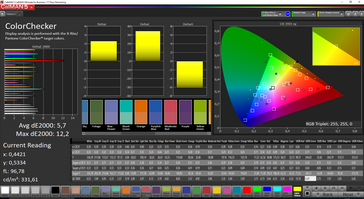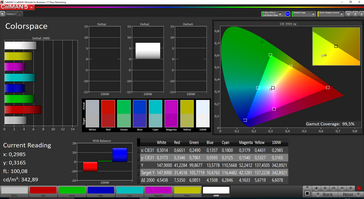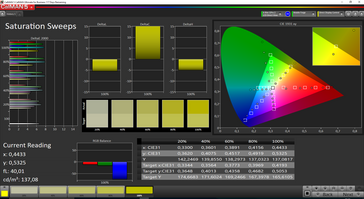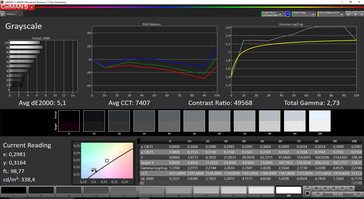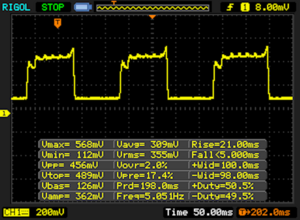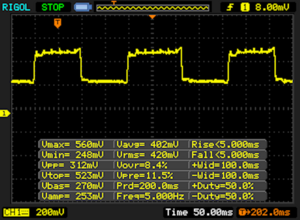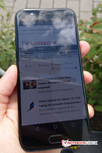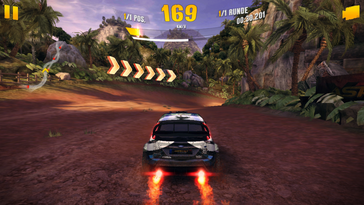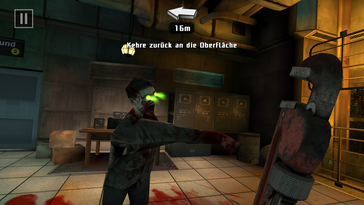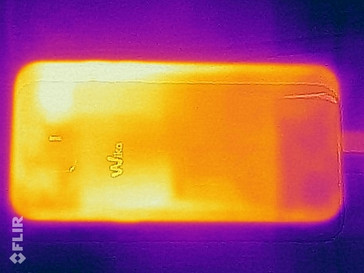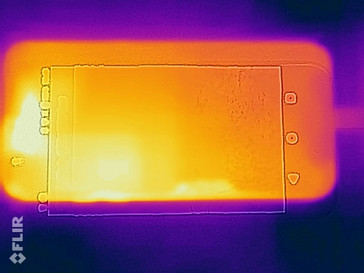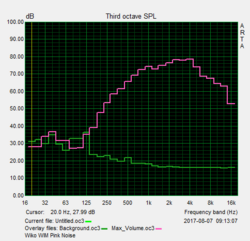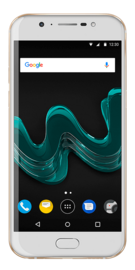Wiko WIM Smartphone Review
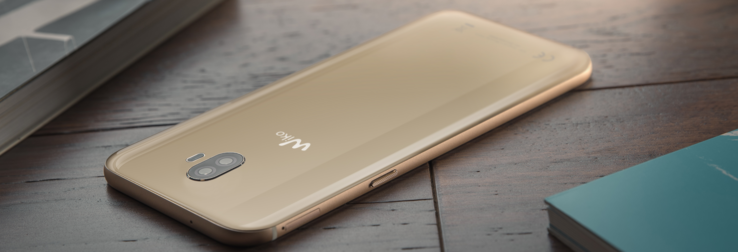
For the original German review, see here.
During MWC 2017 the French smartphone manufacturer Wiko unveiled their model WIM, a premium smartphone that soon starts shipping to several countries worldwide (including Germany). Unfortunately, word about availability in the US remains scarce as of mid-August.
Wiko decided to expand their smartphone business from entry-level-only into the premium segment. The mid-range handset is furnished with a 5.5-inch 1080p AMOLED display, and a dual-camera setup with 13 MP in a shiny glass case and motorized it with an octa-core SoC by Qualcomm which is backed by 4 GB of RAM. The 64 GB of internal storage can be expanded via microSD card by 128 GB.
With an RRP of 400 Euros (~ $470), the dual-sim smartphone competes against the BQ Aquaris X Pro, Samsung Galaxy A5 (2017), OnePlus 3T, LG G6, and the HTC U Ultra. Xiaomi´s high-end Mi 6 (imported) falls into this price range, as well.
Case
The customer can choose whether they want this device of 160 g (~ 5.64 oz) in the colors black, gold, or green (‘deep bleen’). The front is fully protected with scratch-resistant 2.5-D Corning Gorilla Glass 3 that seamlessly transitions into the rounded metal frame. The AMOLED display has very thin bezels to the left and right sides, however the bottom and top appear rather thick resulting in a screen-to-body ratio of 70.8 %.
The case has a good surface feel to it, lies well-balanced in your hands and its rigid built does not creak or submit to bending. Only the metal frame and the camera ring on the back might feel a little to sharp-edged.
Given its price tag, the power and volume control buttons are unconvincing. They are fit too loosely into the case and wobble slightly during usage. The pressure points are well-defined, though.
Equipment
The Wiko WIM is equipped with 64 GB of internal eMMC storage out of which 51.4 GB can be used. The difference is occupied by the OS and pre-installed apps. If this isn´t already enough for some users, the storage capacity can be expanded by another 128 GB via a microSD card. After the card is inserted and formatted, it can be used as internal storage.
The 3,200 mAh-sized battery of the Wiko WIM is charged through the microUSB port on the bottom of the device. Wiko does not yet utilize the convenient new Type-C standard for the microUSB port, which would make life for their users a tiny bit easier as they wouldn´t have to fiddle with the right orientation of the plug. It does, however, support Qualcomm´s Quickcharge 3.0 and external peripherals (e.g. USB flash drives) via USB-OTG.
The device is further equipped with a fingerprint reader, dual-sim capability, Wifi Direct, VHF radio, a compass, and a status LED. Wireless transfer of media content via Miracast is supported, which performed very well in our test setup with a Sony Android TV.
Software
The smartphone comes with Android 7.1 Nougat with the latest security patch as of August 2017. The UI strongly resembles stock Android, but has a few changes here and there.
Alongside some visual changes, Wiko pre-installed several helpful software features. With the screen-off gestures, users can start applications simply by drawing basic commands on the turned-off screen in stand-by mode. Drawing an ‘M’ on the screen would e.g. open the music app. The ‘double-tap-to-wake’-feature as well as muting the device by turning the phone around can be activated by the user in the settings.
Communication and GPS
The integrated Wi-Fi module of the Wiko WIM is capable of IEEE-802.11 a/b/g/n/ac at 2.4 and 5 GHz. Wi-Fi reception is strong and stable. We measured an attenuation of -35 dBm in immediate proximity to our Telekom Speedport W921V router.
Our measured Wi-Fi transfer speeds of 351 Mbit/s (iperf server) and 276 Mbit/s (iperf client) between the WIM and our Linksys EA8500 reference router are very good for its price segment.
On-the-go, the Wiko WIM´s LTE module reaches download speeds of up to 300 Mbit/s (LTE-Cat.6 speed) for both nanoSIM slots simultaneously. For wireless communication between two mobile devices, the WIM offers Bluetooth 4.2. and NFC.
| Networking | |
| iperf3 transmit AX12 | |
| Xiaomi Mi 6 | |
| OnePlus 3T | |
| Wiko WIM | |
| HTC U Ultra | |
| LG G6 | |
| Samsung Galaxy A5 2017 | |
| BQ Aquaris X Pro | |
| iperf3 receive AX12 | |
| Xiaomi Mi 6 | |
| Wiko WIM | |
| LG G6 | |
| OnePlus 3T | |
| HTC U Ultra | |
| BQ Aquaris X Pro | |
| Samsung Galaxy A5 2017 | |
Global positioning is achieved by GPS, GLONASS, BeiDou and Galileo. Outdoors, the phone gets rapid fixes on the satellites with a precision of 5 meters (16.4 ft). Indoors, the link is established, but with very low precision.
To determine its geolocation precision in a real-world scenario, we compared the WIM to a Garmin Edge 500 bicycle GPS tracker. A difference of only 60 meters (~65 yards) on a total distance of 6.5 km (~ 4 miles) between the two can be measured – this is very good.
Telephony and call quality
Cameras
The rear-facing main shooter in the WIM is a dual-camera setup (RGB, monochromatic) with a resolution of 13 MP and an f/2.0 aperture. The monochromatic sensor supports its RGB buddy by enhancing details and sharpening of the image in bright and dim lighting conditions through its higher light sensitivity. Shooting only monochromatic images is possible. The rear cameras are based on 1/3 inch Sony IMX258 sensors with a pixel size of 1.12 x 1.12 µm. 4K video can be recorded at 30 fps.
Image quality is indeed good, although dynamic range and sharpness could be quite a bit better. The phase detection does not yield perfect sharpness in autofocus mode for subjects in close proximity or for macro images. For enthusiasts, the manual focus in pro mode offers significantly better results.
In bad lighting conditions, the images are very noisy with low maximum brightness as can be expected given the image sensor´s small pixel size and comparably small open aperture. The LG G6 with its IMX258-CMOS sensor performs significantly better.
The 16 MP front-facing secondary camera is a good tool for group photos and selfies for social media, but nothing more. It can record 1080p videos at 30 fps.
Accessories and warranty
Alongside the obligatory accessories, such as the modular power adaptor (1.5 A, 12V), a USB cable, a headset, and warranty information, users can opt for a phone case by Wiko called the WiView for their Wiko WIM.
In Germany, the WIM comes with a standard 2-year guarantee, but only a 6-month warranty for accessories. The warranty remains untouched by this policy.
Input devices and handling
Google´s virtual keyboard comes pre-installed. The capacitive touchscreen of the WIM provides great gliding capabilities and executes inputs very quickly.
The active fingerprint sensor on the front of the phone is integrated into the physical home button. It is not among the quickest ones on the market, but using your finger to unlock the phone works reliably.
The phone can either be controlled via virtual on-screen buttons for ‘back’, ‘recent apps’, and ‘home’ or via the physical, capacitive home button. This multi-functional button does not only recognize fingerprints but can also be used to input the ‘back’-command (short touch on the button), the ‘recent apps’-command (long push-through of the button), or the ‘home’-command (short push-through of the button).
Display
The WIKO WIM has a 5.5-inch 1080p AMOLED screen with a 16:9 aspect ratio. The pixel density of 401 ppi may not be as high as it is in the LG G6 with its QHD resolution, but it is sufficient for daily use.
The maximum brightness of the screen of 372 cd/m² can only be achieved in manual mode. With the ambient light sensor turned on, the brightness reached only up to a maximum of 350 cd/m² in the centre of the screen. During the more realistic APL50 test, in which a homogenous distribution of light and dark areas on the screen is simulated, we could measure a brightness of up to 376 cd/m². The low minimum brightness of 65 cd/m² is striking. We could not observe screen flickering (PWM) on the Wiko WIM.
| |||||||||||||||||||||||||
Brightness Distribution: 90 %
Center on Battery: 344 cd/m²
Contrast: ∞:1 (Black: 0 cd/m²)
ΔE ColorChecker Calman: 5.7 | ∀{0.5-29.43 Ø4.78}
ΔE Greyscale Calman: 5.1 | ∀{0.09-98 Ø5}
99.5% sRGB (Calman 2D)
Gamma: 2.73
CCT: 7407 K
| Wiko WIM AMOLED, 1920x1080, 5.5" | BQ Aquaris X Pro IPS, 1920x1080, 5.2" | HTC U Ultra SLCD 5, 2560x1440, 5.7" | LG G6 IPS LCD, 2880x1440, 5.7" | Xiaomi Mi 6 IPS, 1920x1080, 5.2" | Samsung Galaxy A5 2017 Super AMOLED, 1920x1080, 5.2" | OnePlus 3T Optic-AMOLED, 1920x1080, 5.5" | |
|---|---|---|---|---|---|---|---|
| Screen | -14% | 3% | 33% | 31% | 56% | -8% | |
| Brightness middle (cd/m²) | 344 | 458 33% | 470 37% | 646 88% | 620 80% | 539 57% | 421 22% |
| Brightness (cd/m²) | 353 | 473 34% | 445 26% | 611 73% | 586 66% | 542 54% | 430 22% |
| Brightness Distribution (%) | 90 | 88 -2% | 88 -2% | 89 -1% | 89 -1% | 93 3% | 84 -7% |
| Black Level * (cd/m²) | 0.51 | 0.22 | 0.23 | 0.28 | |||
| Colorchecker dE 2000 * | 5.7 | 7.1 -25% | 5.5 4% | 4.5 21% | 4.8 16% | 1.6 72% | 7.1 -25% |
| Colorchecker dE 2000 max. * | 12.2 | 14.5 -19% | 11.9 2% | 8.3 32% | 8.8 28% | 2.6 79% | 15.3 -25% |
| Greyscale dE 2000 * | 5.1 | 10.5 -106% | 7.6 -49% | 6 -18% | 5.3 -4% | 1.5 71% | 6.8 -33% |
| Gamma | 2.73 81% | 2.28 96% | 2.2 100% | 2.27 97% | 2.25 98% | 2.28 96% | 2.23 99% |
| CCT | 7407 88% | 8951 73% | 7454 87% | 7996 81% | 7473 87% | 6422 101% | 7866 83% |
| Contrast (:1) | 898 | 2136 | 2809 | 2214 | |||
| Color Space (Percent of AdobeRGB 1998) (%) | 67.74 | ||||||
| Color Space (Percent of sRGB) (%) | 99.05 |
* ... smaller is better
Screen Flickering / PWM (Pulse-Width Modulation)
| Screen flickering / PWM not detected | |||
In comparison: 53 % of all tested devices do not use PWM to dim the display. If PWM was detected, an average of 8108 (minimum: 5 - maximum: 343500) Hz was measured. | |||
As expected, the OLED screen offers great contrasts due to its ability of displaying absolute black. Consequently, the contrast ratio is theoretically nearing infinity. Small weaknesses become apparent in color reproduction: Delta-E deviations of 5.7 (mixed colors) and 5.1 (grayscale) are a little too high. The Gamma value of 2.73 is too high (desired: > 2.2) and decreases shadowing.
The color temperature of the display with 7407 K is significantly higher than the standard value of 6500 K. This leads to a cooler color reproduction. The visible blue hue when viewing grayscale is not considerably disturbing during everyday use.
Display Response Times
| ↔ Response Time Black to White | ||
|---|---|---|
| 26 ms ... rise ↗ and fall ↘ combined | ↗ 21 ms rise | |
| ↘ 5 ms fall | ||
| The screen shows relatively slow response rates in our tests and may be too slow for gamers. In comparison, all tested devices range from 0.1 (minimum) to 240 (maximum) ms. » 61 % of all devices are better. This means that the measured response time is worse than the average of all tested devices (20.2 ms). | ||
| ↔ Response Time 50% Grey to 80% Grey | ||
| 10 ms ... rise ↗ and fall ↘ combined | ↗ 5 ms rise | |
| ↘ 5 ms fall | ||
| The screen shows good response rates in our tests, but may be too slow for competitive gamers. In comparison, all tested devices range from 0.165 (minimum) to 636 (maximum) ms. » 22 % of all devices are better. This means that the measured response time is better than the average of all tested devices (31.6 ms). | ||
Performance
The Wiko WIM is furnished with a 600-series Qualcomm SoC. The Snapdragon 626 MSM8953 has eight Cortex-A53 cores with clock speeds of up to 2.2 GHz. The SoC comes with an Adreno 506 GPU.
Assisted by 4 GB of RAM, die mid-range smartphone delivers a subjectively good performance. Although, during multi-tasking scenarios, brief performance hiccups and stutters can be experienced.
In our tests, the WIM falls well within the range of other handsets with Snapdragon 626 SoCs. In graphically demanding tests, it expectedly falls behind the high-end Snapdragon 821 or Snapdragon 835 SoCs.
| AnTuTu v6 - Total Score (sort by value) | |
| Wiko WIM | |
| BQ Aquaris X Pro | |
| HTC U Ultra | |
| LG G6 | |
| Xiaomi Mi 6 | |
| Samsung Galaxy A5 2017 | |
| OnePlus 3T | |
| PCMark for Android | |
| Work performance score (sort by value) | |
| Wiko WIM | |
| BQ Aquaris X Pro | |
| HTC U Ultra | |
| LG G6 | |
| Xiaomi Mi 6 | |
| Samsung Galaxy A5 2017 | |
| OnePlus 3T | |
| Work 2.0 performance score (sort by value) | |
| Wiko WIM | |
| BQ Aquaris X Pro | |
| HTC U Ultra | |
| LG G6 | |
| Xiaomi Mi 6 | |
| Samsung Galaxy A5 2017 | |
| Geekbench 4.4 | |
| 64 Bit Single-Core Score (sort by value) | |
| Wiko WIM | |
| BQ Aquaris X Pro | |
| LG G6 | |
| Xiaomi Mi 6 | |
| Samsung Galaxy A5 2017 | |
| 64 Bit Multi-Core Score (sort by value) | |
| Wiko WIM | |
| BQ Aquaris X Pro | |
| LG G6 | |
| Xiaomi Mi 6 | |
| Samsung Galaxy A5 2017 | |
| Compute RenderScript Score (sort by value) | |
| LG G6 | |
| Samsung Galaxy A5 2017 | |
| GFXBench (DX / GLBenchmark) 2.7 | |
| T-Rex Onscreen (sort by value) | |
| Wiko WIM | |
| BQ Aquaris X Pro | |
| HTC U Ultra | |
| LG G6 | |
| Xiaomi Mi 6 | |
| Samsung Galaxy A5 2017 | |
| OnePlus 3T | |
| 1920x1080 T-Rex Offscreen (sort by value) | |
| Wiko WIM | |
| BQ Aquaris X Pro | |
| HTC U Ultra | |
| LG G6 | |
| Xiaomi Mi 6 | |
| Samsung Galaxy A5 2017 | |
| OnePlus 3T | |
| GFXBench 3.0 | |
| on screen Manhattan Onscreen OGL (sort by value) | |
| Wiko WIM | |
| BQ Aquaris X Pro | |
| HTC U Ultra | |
| LG G6 | |
| Xiaomi Mi 6 | |
| Samsung Galaxy A5 2017 | |
| OnePlus 3T | |
| 1920x1080 1080p Manhattan Offscreen (sort by value) | |
| Wiko WIM | |
| BQ Aquaris X Pro | |
| HTC U Ultra | |
| LG G6 | |
| Xiaomi Mi 6 | |
| Samsung Galaxy A5 2017 | |
| OnePlus 3T | |
| GFXBench 3.1 | |
| on screen Manhattan ES 3.1 Onscreen (sort by value) | |
| Wiko WIM | |
| BQ Aquaris X Pro | |
| HTC U Ultra | |
| LG G6 | |
| Xiaomi Mi 6 | |
| Samsung Galaxy A5 2017 | |
| OnePlus 3T | |
| 1920x1080 Manhattan ES 3.1 Offscreen (sort by value) | |
| Wiko WIM | |
| BQ Aquaris X Pro | |
| HTC U Ultra | |
| LG G6 | |
| Xiaomi Mi 6 | |
| Samsung Galaxy A5 2017 | |
| OnePlus 3T | |
| GFXBench | |
| on screen Car Chase Onscreen (sort by value) | |
| Wiko WIM | |
| BQ Aquaris X Pro | |
| HTC U Ultra | |
| LG G6 | |
| Xiaomi Mi 6 | |
| Samsung Galaxy A5 2017 | |
| OnePlus 3T | |
| 1920x1080 Car Chase Offscreen (sort by value) | |
| Wiko WIM | |
| BQ Aquaris X Pro | |
| HTC U Ultra | |
| LG G6 | |
| Xiaomi Mi 6 | |
| Samsung Galaxy A5 2017 | |
| OnePlus 3T | |
Internet browsing performance on Google Chrome is only satisfying. Web content can be loaded quickly, as long as we scrolled slowy. In our browser benchmarks, the WIM and the BQ Aquaris X Pro hold hands and fall behind their competition.
| JetStream 1.1 - Total Score | |
| Xiaomi Mi 6 (Chrome Version 58) | |
| LG G6 (Chrome 57) | |
| OnePlus 3T (Chrome 54.0.2840.85) | |
| HTC U Ultra (Chrome 56) | |
| Samsung Galaxy A5 2017 (Samsung Browser (Chrome 44)) | |
| Wiko WIM (Chrome Version 59) | |
| BQ Aquaris X Pro (Chrome 59.0.3071.125) | |
| Octane V2 - Total Score | |
| Xiaomi Mi 6 (Chrome Version 58) | |
| OnePlus 3T (Chrome 54.0.2840.85) | |
| LG G6 (Chrome 57) | |
| HTC U Ultra (Chrome 56) | |
| Samsung Galaxy A5 2017 (Samsung Browser (Chrome 44)) | |
| Wiko WIM (Chrome Version 59) | |
| BQ Aquaris X Pro (Chrome 59.0.3071.125) | |
| Mozilla Kraken 1.1 - Total | |
| Wiko WIM (Chrome Version 59) | |
| BQ Aquaris X Pro (Chrome 59.0.3071.125) | |
| Samsung Galaxy A5 2017 (Samsung Browser (Chrome 44)) | |
| HTC U Ultra (Chrome 56) | |
| OnePlus 3T (Chrome 54.0.2840.85) | |
| Xiaomi Mi 6 (Chrome Version 58) | |
| LG G6 (Chrome 57) | |
| WebXPRT 2015 - Overall | |
| OnePlus 3T (Chrome 54.0.2840.85) | |
| LG G6 (Chrome 57) | |
| Samsung Galaxy A5 2017 (Samsung Browser (Chrome 44)) | |
| BQ Aquaris X Pro (Chrome 59.0.3071.125) | |
* ... smaller is better
The generously sized eMMC internal storage (64 GB) is not state-of-the-art in regard of read/write-speeds. Wiko would have been better advised to install a UFS storage for the WIM´s recommeded retail price.
The microSD card slot was tested with a Toshiba Exceria Pro M501 (max. read 270 MB/s, write 150 MB/s) reference card. It is on par with the HTC U Ultra. However, neither one of these handsets are able to fully exploit the cards full potential.
| Wiko WIM | BQ Aquaris X Pro | HTC U Ultra | LG G6 | Xiaomi Mi 6 | Samsung Galaxy A5 2017 | OnePlus 3T | |
|---|---|---|---|---|---|---|---|
| AndroBench 3-5 | -6% | 35% | 34% | 145% | -25% | 191% | |
| Sequential Read 256KB (MB/s) | 272.1 | 270.5 -1% | 423.9 56% | 428.7 58% | 728 168% | 182 -33% | 436.4 60% |
| Sequential Write 256KB (MB/s) | 136.7 | 139.6 2% | 164.7 20% | 122.8 -10% | 196.7 44% | 77.1 -44% | 165.3 21% |
| Random Read 4KB (MB/s) | 38.1 | 37.97 0% | 84.2 121% | 95.2 150% | 143.5 277% | 22.41 -41% | 123.6 224% |
| Random Write 4KB (MB/s) | 13.34 | 12.07 -10% | 13.7 3% | 16.58 24% | 25.19 89% | 12.13 -9% | 74.4 458% |
| Sequential Read 256KB SDCard (MB/s) | 83.8 | 78.7 ? -6% | 82.8 ? -1% | 77.6 ? -7% | 73.7 ? -12% | ||
| Sequential Write 256KB SDCard (MB/s) | 61.4 | 49.77 ? -19% | 67.6 ? 10% | 53.3 ? -13% | 56 ? -9% |
Games
The Qualcomm Adreno 506 graphics processing unit clocks up to 650 MHz and supports APIs such as Vulkan, OpenGL ES 3.1 or Direct3D 12. Current Android games in the Google PlayStore, e.g. Asphalt Xtreme and Dead Trigger 2, can be displayed smoothly with some minor frame rate stutters here and there.
The touchscreen and position sensor controls work very well.
Emissions
Temperature
(+) The maximum temperature on the upper side is 32 °C / 90 F, compared to the average of 35.2 °C / 95 F, ranging from 21.9 to 247 °C for the class Smartphone.
(+) The bottom heats up to a maximum of 32 °C / 90 F, compared to the average of 34 °C / 93 F
(+) In idle usage, the average temperature for the upper side is 28.5 °C / 83 F, compared to the device average of 32.9 °C / 91 F.
Speakers
The mono speaker of the Wiko WIM is located on the bottom edge of the device and can produce very loud sounds of up to 87 dB(A). The mids are comparably linear, the trebles are not very present. Most lower range sounds are inaudible.
For the occasional short movie clip, the speaker delivers sufficient quality. For prolonged media consumption, we advise the use of the included pair of earphones. Thanks to the multi-Bluetooth-pairing, users can even connect multiple Bluetooth devices to the WIM, e.g. two headsets.
Wiko WIM audio analysis
(+) | speakers can play relatively loud (87 dB)
Bass 100 - 315 Hz
(-) | nearly no bass - on average 23.8% lower than median
(±) | linearity of bass is average (10.4% delta to prev. frequency)
Mids 400 - 2000 Hz
(±) | higher mids - on average 5.5% higher than median
(+) | mids are linear (5.2% delta to prev. frequency)
Highs 2 - 16 kHz
(±) | higher highs - on average 6.2% higher than median
(+) | highs are linear (4.7% delta to prev. frequency)
Overall 100 - 16.000 Hz
(±) | linearity of overall sound is average (21.4% difference to median)
Compared to same class
» 41% of all tested devices in this class were better, 8% similar, 51% worse
» The best had a delta of 11%, average was 35%, worst was 134%
Compared to all devices tested
» 59% of all tested devices were better, 7% similar, 34% worse
» The best had a delta of 4%, average was 24%, worst was 134%
HTC U Ultra audio analysis
(+) | speakers can play relatively loud (86 dB)
Bass 100 - 315 Hz
(-) | nearly no bass - on average 27.3% lower than median
(±) | linearity of bass is average (10.1% delta to prev. frequency)
Mids 400 - 2000 Hz
(+) | balanced mids - only 4.4% away from median
(+) | mids are linear (6.6% delta to prev. frequency)
Highs 2 - 16 kHz
(±) | higher highs - on average 12.1% higher than median
(+) | highs are linear (6.3% delta to prev. frequency)
Overall 100 - 16.000 Hz
(±) | linearity of overall sound is average (29% difference to median)
Compared to same class
» 76% of all tested devices in this class were better, 3% similar, 21% worse
» The best had a delta of 11%, average was 35%, worst was 134%
Compared to all devices tested
» 87% of all tested devices were better, 2% similar, 11% worse
» The best had a delta of 4%, average was 24%, worst was 134%
LG G6 audio analysis
(±) | speaker loudness is average but good (80.3 dB)
Bass 100 - 315 Hz
(-) | nearly no bass - on average 17.1% lower than median
(±) | linearity of bass is average (14.7% delta to prev. frequency)
Mids 400 - 2000 Hz
(+) | balanced mids - only 4.8% away from median
(+) | mids are linear (4% delta to prev. frequency)
Highs 2 - 16 kHz
(±) | higher highs - on average 6.6% higher than median
(+) | highs are linear (5.9% delta to prev. frequency)
Overall 100 - 16.000 Hz
(±) | linearity of overall sound is average (23.2% difference to median)
Compared to same class
» 52% of all tested devices in this class were better, 7% similar, 41% worse
» The best had a delta of 11%, average was 35%, worst was 134%
Compared to all devices tested
» 69% of all tested devices were better, 5% similar, 26% worse
» The best had a delta of 4%, average was 24%, worst was 134%
Frequency diagram comparison (Toggle check boxes on or off!)
Energy management
Energy consumption
Considering the 5.5 inch screen size, energy consumption is very efficient, except during idling.
| Off / Standby | |
| Idle | |
| Load |
|
Key:
min: | |
| Wiko WIM 3200 mAh | HTC U Ultra 3000 mAh | LG G6 3300 mAh | BQ Aquaris X Pro 3100 mAh | Xiaomi Mi 6 3350 mAh | Samsung Galaxy A5 2017 3000 mAh | OnePlus 3T 3400 mAh | |
|---|---|---|---|---|---|---|---|
| Power Consumption | -94% | -53% | -34% | -34% | 6% | -75% | |
| Idle Minimum * (Watt) | 0.93 | 1 -8% | 0.62 33% | 0.67 28% | 0.45 52% | 0.64 31% | 0.61 34% |
| Idle Average * (Watt) | 1.28 | 2.41 -88% | 1.43 -12% | 1.7 -33% | 1.67 -30% | 1.36 -6% | 1.77 -38% |
| Idle Maximum * (Watt) | 1.37 | 2.46 -80% | 1.48 -8% | 1.78 -30% | 1.69 -23% | 1.4 -2% | 1.81 -32% |
| Load Average * (Watt) | 2.39 | 6.8 -185% | 5.52 -131% | 4.42 -85% | 4.07 -70% | 2.53 -6% | 6.67 -179% |
| Load Maximum * (Watt) | 4.25 | 8.9 -109% | 10.47 -146% | 6.3 -48% | 8.54 -101% | 3.63 15% | 10.98 -158% |
* ... smaller is better
Battery runtime
The WIM´s good energy management has a positive impact on its battery runtimes. In our Wi-Fi test, with the screen brightness set to 150 cd/m², the 3200 mAh battery lasts 8 hours and 12 minutes. In face off its competition, the battery life is below average.
Using the included 18W power adapter with Quick Charge 3.0, the WIM fully charges from 0 % to 100 % in 1.5 hours.
| Wiko WIM 3200 mAh | BQ Aquaris X Pro 3100 mAh | HTC U Ultra 3000 mAh | LG G6 3300 mAh | Xiaomi Mi 6 3350 mAh | Samsung Galaxy A5 2017 3000 mAh | OnePlus 3T 3400 mAh | |
|---|---|---|---|---|---|---|---|
| Battery runtime | |||||||
| WiFi v1.3 (h) | 8.2 | 12.2 49% | 9.1 11% | 11.5 40% | 12.3 50% | 14.1 72% | 8.2 0% |
Pros
Cons
Verdict
The Wiko WIM leaves us with a good impression. Considering the price tag of around $470, potential customers can look forward to a solid mid-range smartphone with dual-SIM and internal storage expansion capabilities and good battery life.
Competitors in this price range often offer a better overall package. Especially with regard to the camera quality, browsing performance, and speed of the internal storage, the Wiko WIM is not too convincing. The brightness range and color accuracy of the otherwise very good AMOLED display add to the missed potential of the device.
Buying the Wiko WIM won´t do any harm. In light of the competition and due to its RRP, however, we wouldn´t recommend this handset as it is.
Wiko WIM
- 08/15/2017 v6 (old)
Marcus Herbrich







